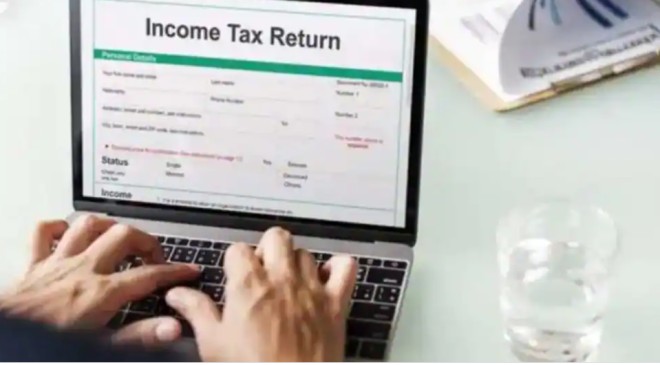Tax season in India is approaching, and it’s the perfect time for taxpayers to start preparing. Proactive planning and a clear understanding of tax regulations ensure a smooth and stress-free experience.
Read More: I-T dept asks taxpayers to link PAN with Aadhaar by May 31 to avoid higher TDS deduction
By taking a few essential steps now, you can maximise your savings, avoid last-minute hassles, and meet all your obligations efficiently.
This guest post aims to empower Indian taxpayers with practical insights and actionable tips to prepare for the upcoming tax season. Whether you’re a salaried individual, a self-employed professional, or a business owner, this guide will equip you with the knowledge and confidence to approach the tax season proactively. So, let’s begin.
Important Note For Crypto Investors
After the introduction of crypto tax in India, crypto investors are required to report their crypto gains and pay a flat 30% tax (4% cess) on them. Be sure to file accurately to avoid penalties. For crypto investors, schedule VDA was added by income tax department in 2 Income Tax Return (ITR) form 2 and 3:
ITR 2 is your go-to form if you earned capital gains from cryptocurrency but have no business income.
ITR 3 comes into play if you’re a more active crypto trader and your crypto activities generate business income.
New Tax Regime Vs Old Tax Regime
New Tax Regime
Starting April 1, 2020 (FY 2020-21), the Government of India introduced an optional tax rate system for individuals and Hindu Undivided Families (HUF).
With this change, Section 115 BAC was added to the Income Tax Act of 1961, offering lower tax rates to taxpayers and HUFs who choose not to claim certain tax deductions or exemptions.
As per the Union Budget 2023 recommendations, the new tax regime is now the default choice. Taxpayers wishing to use the old tax regime must actively select it.
Under the new system, various exemptions and deductions, including HRA, LTA, 80C, and 80D, are unavailable. Initially, the new tax structure received limited support. In response, the government announced five major adjustments in Budget 2023 to encourage taxpayers to adopt the new system. They are as follows:
- Enhanced Tax Rebate Limit
The tax rebate limit has been increased to INR 7 lakhs. Under the old tax regime, this limit was set at INR 5 lakhs. Under the new regime, individuals earning up to INR 7 lakhs can enjoy complete tax exemption!
- Streamlined Tax Slabs
The tax exemption limit has been elevated to INR 3 lakhs. Below are the revised tax slabs showcasing the new tax regime:
Annual Income (INR)
New Tax Regime
0 – 3,00,000
Nil
3,00,001 – 6,00,000
5%
6,00,001 – 9,00,000
10%
9,00,001 – 12,00,000
Read More: Who Needs to File an Income Tax Return? Know Exemption Limit, Factors Beyond Income, Benefits
15%
12,00,001 – 15,00,000
20%
15,00,000 and Above
30%
- Standard Deduction
The new tax regime now includes the INR 50,000 standard deduction, previously available only under the old system. Combined with the rebate, this allows for a tax-free income of up to INR 7.5 lakhs under the new regime.
- Family Pension Deduction
Individuals receiving a family pension can now claim a deduction of INR 15,000 or one-third of the pension amount, whichever is lower.
- Surcharge Reduction for High-Net-Worth Individuals
The surcharge rate for individuals with an income exceeding INR 5 crores has been reduced from 37% to 25%. This adjustment lowers their effective tax rate from 42.74% to 39%.
Old Tax Regime
The tax system before the new regime is known as the old tax regime. This system offers around 70 exclusions and deductions, such as HRA and LTA, which can significantly reduce taxable income and minimise tax payments.
Section 80C is the most common and substantial deduction, permitting a reduction in taxable income of up to INR 1.5 lakh. Taxpayers also have the flexibility to choose between the existing and new tax regimes. The old tax slab is as follows:
Annual Income (INR)
Old Tax Regime
0 – 2,50,000
Nil
2,50,001 – 5,00,000
5%
5,00,001 – 10,00,000
20%
10,00,001 and above
30%
However, under the old tax slab, you can get different deductions, such as:
Leave Travel Allowance
A standard deduction of INR 50,000 for salaried individuals
Deductions under Section 80TTA/80TTB (on interest from savings account deposits)
Entertainment allowance deduction and professional tax (for government employees)
Read More: ITR Filing FY24: Check the new feature in AIS that can help taxpayers in simplifying tax process
House Rent Allowance
Deduction of INR 15,000 permitted from family pension under clause (ii a) of Section 57
Tax-saving investment deductions under Chapter VI-A (Sections 80C, 80D, 80E, 80CCC, 80CCD, 80DD, 80DDB, 80EE, 80EEA, 80EEB, 80G, 80GG, 80GGA, 80GGC, 80IA, 80-IAB, 80-IAC, 80-IB, 80-IBA, etc.), except for deductions under Section 80CCD(2) (employer’s contribution to NPS) and Section 80JJA.
Which Tax Regime Should You Choose?
Deciding between the new tax regime and the old one is challenging because there is no universally correct answer.
Choosing the best regime depends on the tax savings from deductions and exemptions available under the old tax system. Evaluate these factors to determine which option is most beneficial for you.
What Documents You Need To File Income Tax?
Now that we’re geared up for tax season, let’s delve into the first crucial step: gathering the documents you’ll need to file your Income Tax Return (ITR). Here’s a list of documents you need to file ITR:
PAN and Aadhaar
These two form the bedrock of your ITR filing journey. Your PAN (Permanent Account Number) is your unique tax identification number, while your Aadhaar card verifies your identity. Ensure you have both readily available – you’ll need them to log in to the income tax e-filing portal.
The Salary Slip
If you’re a salaried taxpayer, your salary slip is the next domino to add. This document details your monthly income, deductions like Provident Fund (PF), and the Tax Deducted at Source (TDS) your employer has deposited on your behalf.
Form 16
Your employer issues a Form 16, a comprehensive document that breaks down your entire salary for the financial year, including taxable income, deductions made, and the total TDS deposited. Think of Form 16 as your salary slip’s superpowered sibling – it’s a one-stop shop for all the vital details you need for filing, empowering you to take control of your tax obligations.
Form 26AS
Speaking of TDS, let’s introduce the Form 26AS. This form, downloadable from the Income Tax Department’s website, acts as a consolidated statement of your TDS deposited by various entities throughout the year. It’s handy to cross-check the TDS reflected in your Form 16 and ensure everything aligns.
TDS Certificate
If you earn income other than your salary, like interest on bank deposits or rental income, you’ll likely receive TDS Deduction Certificates from those entities. These certificates detail the TDS deducted from that specific income source. Adding these dominoes to your collection ensures comprehensive income reporting.
Investment Proof
Did you invest in tax-saving instruments like Equity Linked Savings Schemes (ELSS) or Public Provident Funds (PPF) during the year? Remember the investment proofs! These documents, like receipts or passbooks, substantiate your investments and allow you to claim well-deserved tax deductions.
The Home Loan Statement
Finally, if you’re a homeowner with a mortgage, your home loan statement issued by the lender becomes another valuable domino. The interest portion of your home loan repayment is eligible for a tax deduction, and having this statement readily available ensures you claim this benefit.
Important Dates Regarding Income Tax Filing in India
Here are some of the important dates which you must remember if you are an Indian taxpayer:
July 31st: This is the due date for most individual taxpayers to file their Income Tax Returns (ITR) for the previous financial year.
October 31st: If your accounts are subject to audit, this extended deadline applies to you.
December 31st: Missed the initial deadline? You can still file a belated return by this date, but be prepared for potential interest and penalty charges.
Read More: 10 ITR Filing Mistakes To Avoid This Year; Check Full List Here
Conclusion
Following these steps and staying organised has transformed tax season from a looming storm into a manageable breeze. Filing your ITR allows you to demonstrate your financial responsibility and claim valuable tax benefits. So, take a deep breath, armed with your knowledge and gathered documents, and conquer tax season confidently!





































